Short Version: It’s like the first one, but better, and the first one was pretty damn good. It takes everything from the previous game and improves upon it in small ways that makes it more interesting and gripping. Sometimes it follows the previous game’s patterns a little too closely, but this unique and heart-wrenching experience still stands strong on its own.
Long Version: I don’t like horror games, but I love Yomawari: Midnight Shadows. I am never game when it comes to getting scared, but sometimes the planets align and I find something eternally intriguing like the Yomawari games. The first installment was a piece of bittersweet, disturbing, and yet beautiful art that I think about very often. My standards were high when playing Midnight Shadows, but I can safely say that this newest game is on that same level, and still strives to go slightly beyond that.
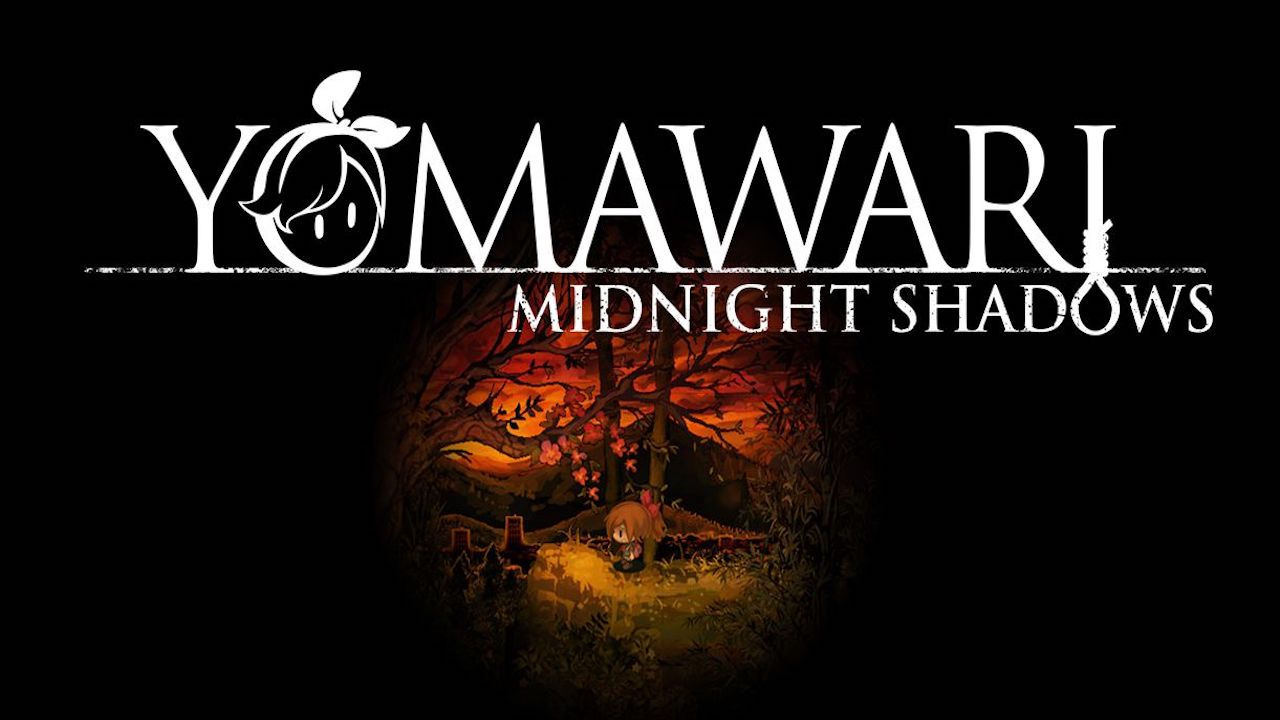
Another Night Alone
For starters, Midnight Shadows is not exactly a sequel, but rather a different story, cast and setting that follows similar patterns from the first game. In Japan, this game is called Shin Yomawari, which can be translated as “New Yomawari.” In a way, it can be considered as less of a sequel and more of a soft reboot with some improvements. Because of this, you don’t need to know anything from the previous game to understand what’s going on here. Despite the many similarities, Midnight Shadows is very much its own thing.
The game captures your attention immediately by insisting that you turn off all the lights and promise that you will never avert your eyes from the screen. Very similar to the first game, the opening tutorial is simple, but very powerful and sets the tone for the entire game. Honestly, I’d rather hang myself than to spoil what happens, but needless to say, it’ll leave an impression on you and become the impetus for most of the mystery surrounding this game and its narrative.
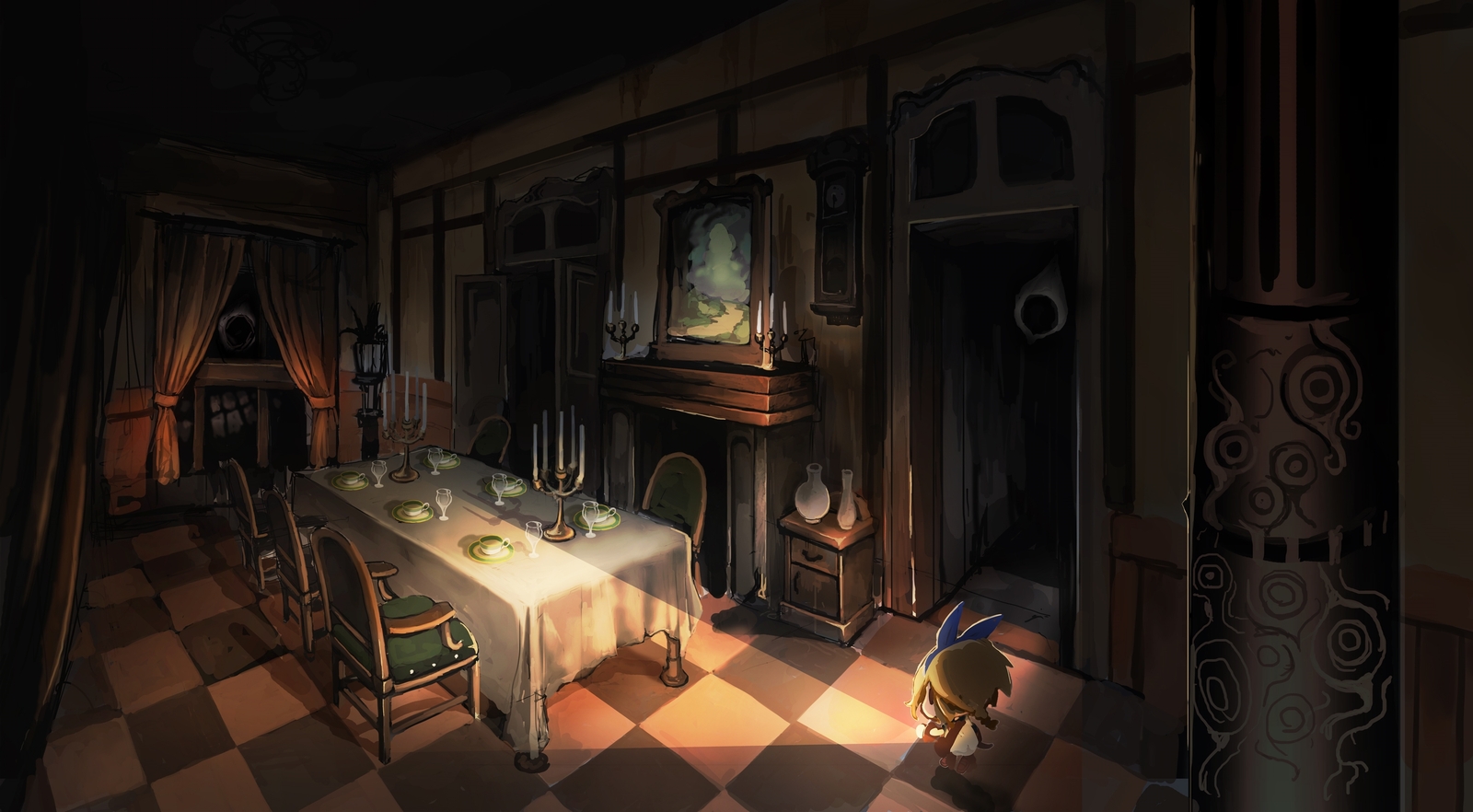
The Talk of the Town
On paper, the story is very simple: There are two best friends named Yui and Haru who get separated on the way back home, to which then you switch between the two to look for one another. Being a Yomawari game, there’s obviously no other way to do this than by wandering around a ghost-infested town at night with nothing but a flashlight and a handful of items. That’s pretty much all there is to know, but you will soon discover that there’s much more beneath the surface. As I said, the story *sounds* simple, but there are so many things in between the simplicity that enriches the world you are encouraged to explore.
Each area of the town is more akin to a level you have to get through, all of them with their own sets of enemies, obstacles and unsettling stories. The most exciting part is that you don’t get to see everything during the first playthrough. After beating the game once, you are allowed to freely explore, fill in the rest of the map and find the many collectibles scattered throughout.
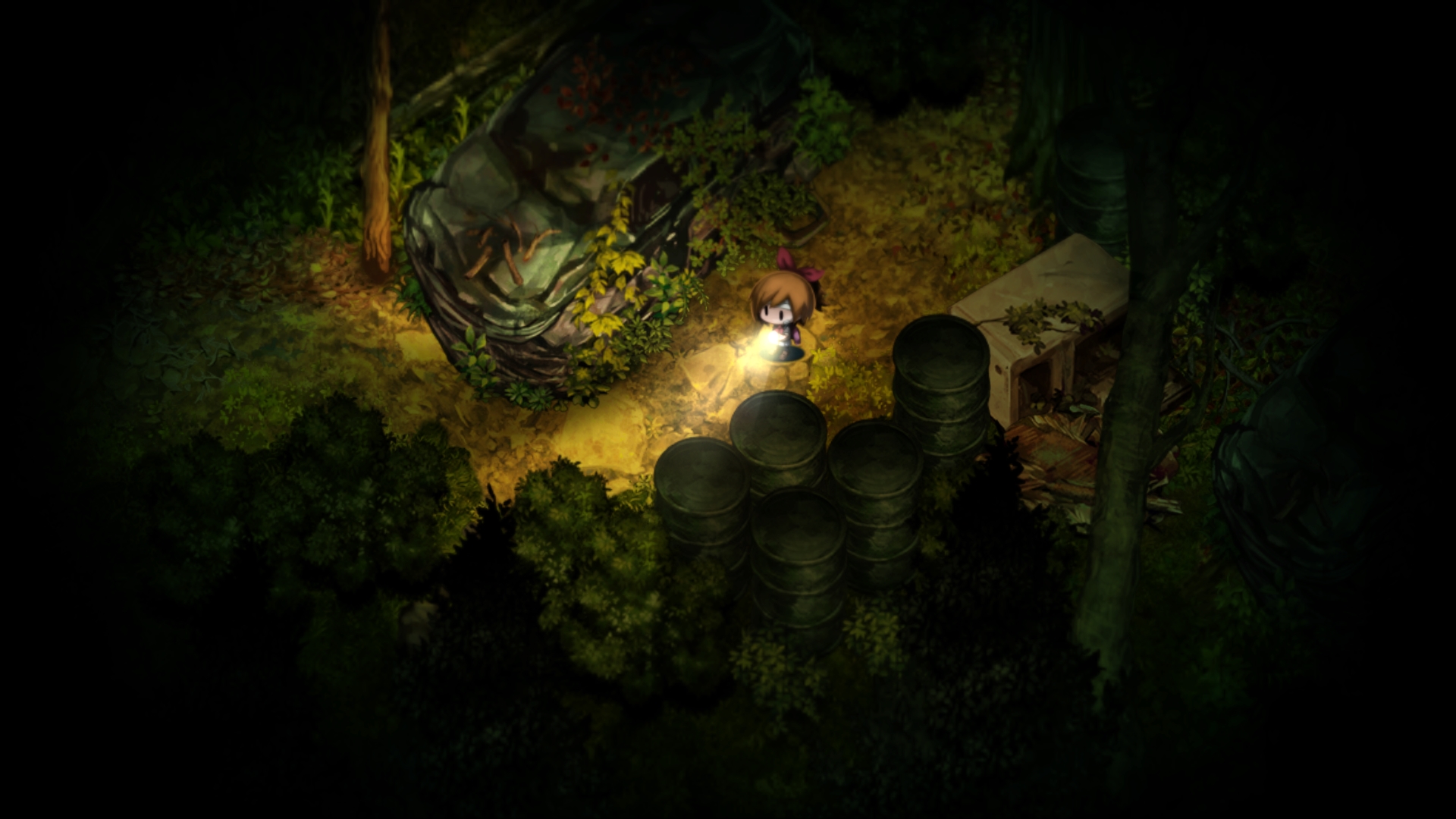
A Full Kind of Emptiness
Everything discovered from the town helps in making the world more interesting. Even though you only see two human characters in the entire game, the town still feels very lived in. Only through inspecting signs, notes, pictures and buildings will you know more about where you are and why certain enemies fight the way they do. This is a good way of keeping the player invested, further pushing them toward the game’s resolution. Again, I don’t want to spoil anything, but you definitely want to see how this story ends. It will leave you with uncomfortable feelings and make you think about how far you would go for the people you love.
Speaking of loving things, I would like to address the game’s beautiful art direction and sound design. Both these elements placed together made for a great time that maybe even surpasses the original. There is a great attention to detail here, like having different footstep sounds for every texture on the floor, electricity passing through lights, and many other atmospheric noises that kept pulling me in. Just like the previous game, Midnight Shadows does an outstanding job in making the game scary through its sound, and lack thereof. As expected, there’s pretty much zero music during the entire game, except for the awesome ending credits theme.
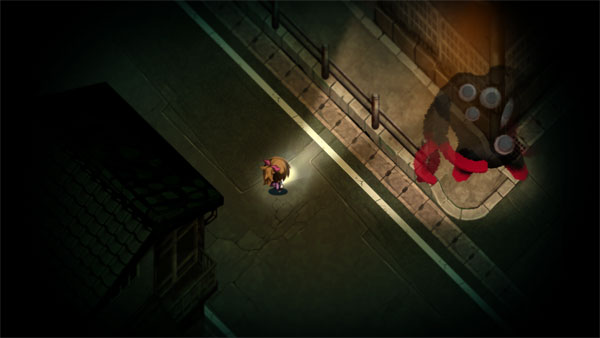
Red Rum
When it comes to the art, I think it is also amazing, almost on the same level as a Vanillaware game (think Odin Sphere or Muramasa Rebirth). They truly outdid themselves with the enemy designs and all the different environments that you explore. Everything still feels like Yomawari, but they implemented a much more vibrant color palette to set a different tone for this new town. Instead of only blues and yellows, Midnight Shadows adds more red, orange and other strong colors that pop nicely on the screen.
However, as much as I love this game, there are still a few criticisms I would like to give, since some of these are problems that still persist from the previous game. For one, the game definitely starts to drag on to the point of sleep-inducing boredom toward the end. It isn’t until you start to get to the final few boss fights that it picks up the pace again. If the developers had cut one or two hours of the second half of the game, I wouldn’t feel like I missed much. I definitely wouldn’t miss the sewer level, THAT’S for sure.
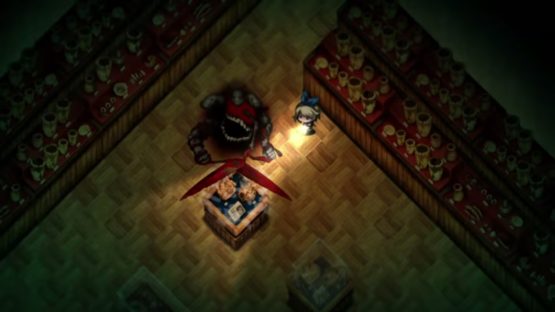
I Can’t Take It Anymore
For second, I pointed out in my review of Night Alone that there were no consequences for dying, leaving the checkpoints as more of a way to break the game. In Midnight Shadows, they sort of fix that issue with another one. Sometimes these checkpoints show up frequently, making the game easy. But in other times they are so few and far in between that it can make going through tough levels a tedious hassle, especially near the end. There were way too many moments where I had to walk very long and empty hallways just to get back to where I was. It’s unnecessary and a waste of time to have them be so far apart. Perhaps losing a certain amount of items might’ve been a better punishment for dying, considering how I never ran out of coins and rocks to use. I would rather have that than just making you go through a walk of shame for every time you die.
Gameplay-wise, both games are exactly the same. You still have your flashlight and an assortment of items for distracting ghosts. You’re still not able to fight anyone, so get ready to avoid anything that moves. Though I do appreciate some of the newer features, like box pushing and charm upgrades, it doesn’t really do enough to mix up the usual formula. At the end of the day, you’re still just running away from ghosts all the time, with barely any necessity to implement new tricks.
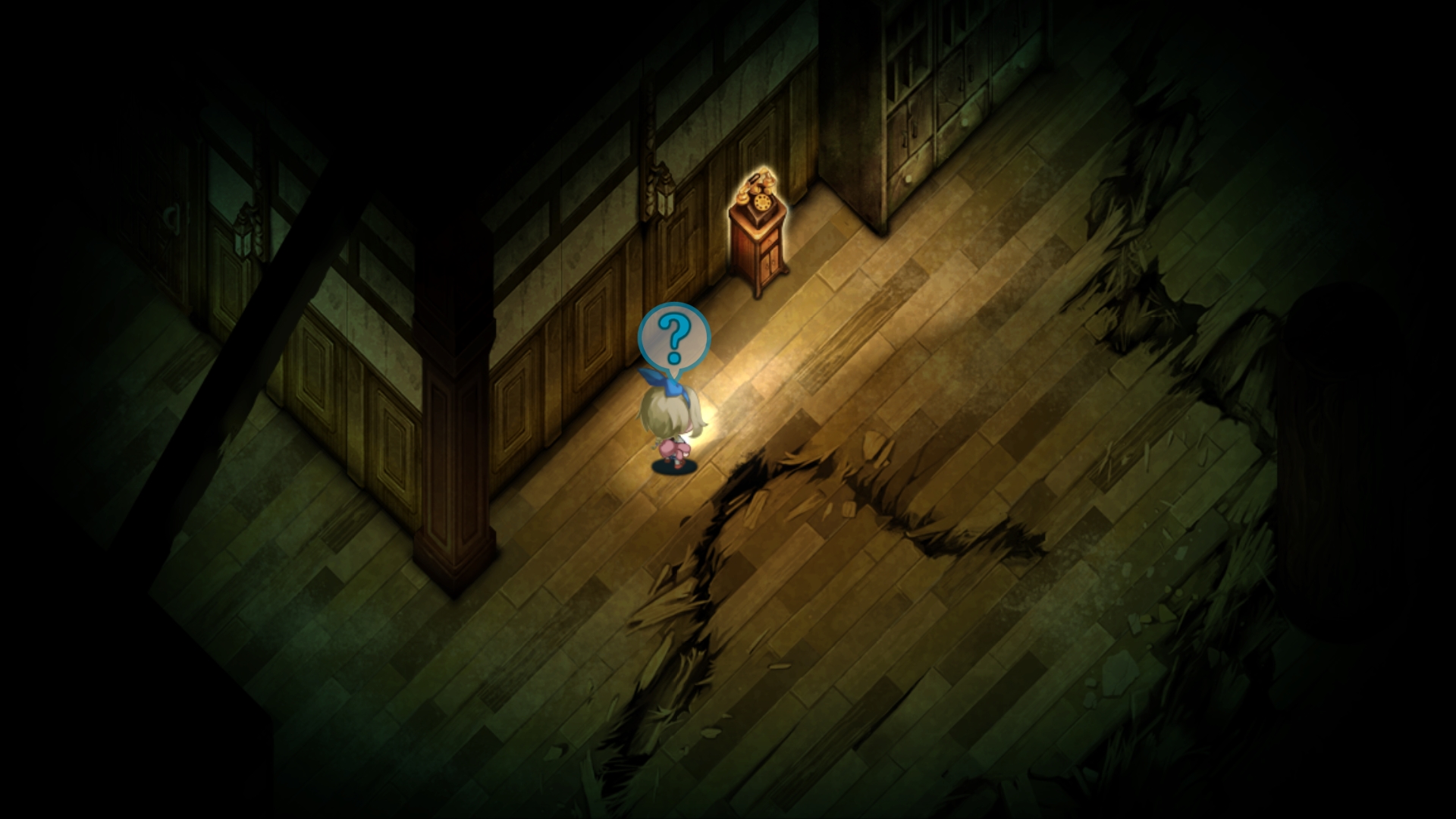
Don’t Leave Me…
And finally, I feel like most of the main beats of the game parallel way too much with the previous one. The reasons for why I call Midnight Shadows an alternate-universe version of Night Alone is mostly due to how both games are practically identical in terms of structure. I would’ve appreciated a more original way of laying out the story, or at least try and break a few of the patterns that Night Alone set. If anything, Midnight Shadows feels like more of an expansion of the original Yomawari than an entirely different game. Eventually, it does distinguish itself in some areas, but you will definitely get a sense of Déjà Vu from playing the first few hours.
…Oh yeah, I almost forgot. The game also has some inexplicable fascination with a certain boss character to the point that they keep making you fight him many, many times throughout the whole story. Believe me, you will learn to despise this boss, and you’ll know who I’m talking about when you see him. Considering the wide variety of bosses the original Yomawari had, it’s very upsetting that they resorted to recycling the same guy way too many times.
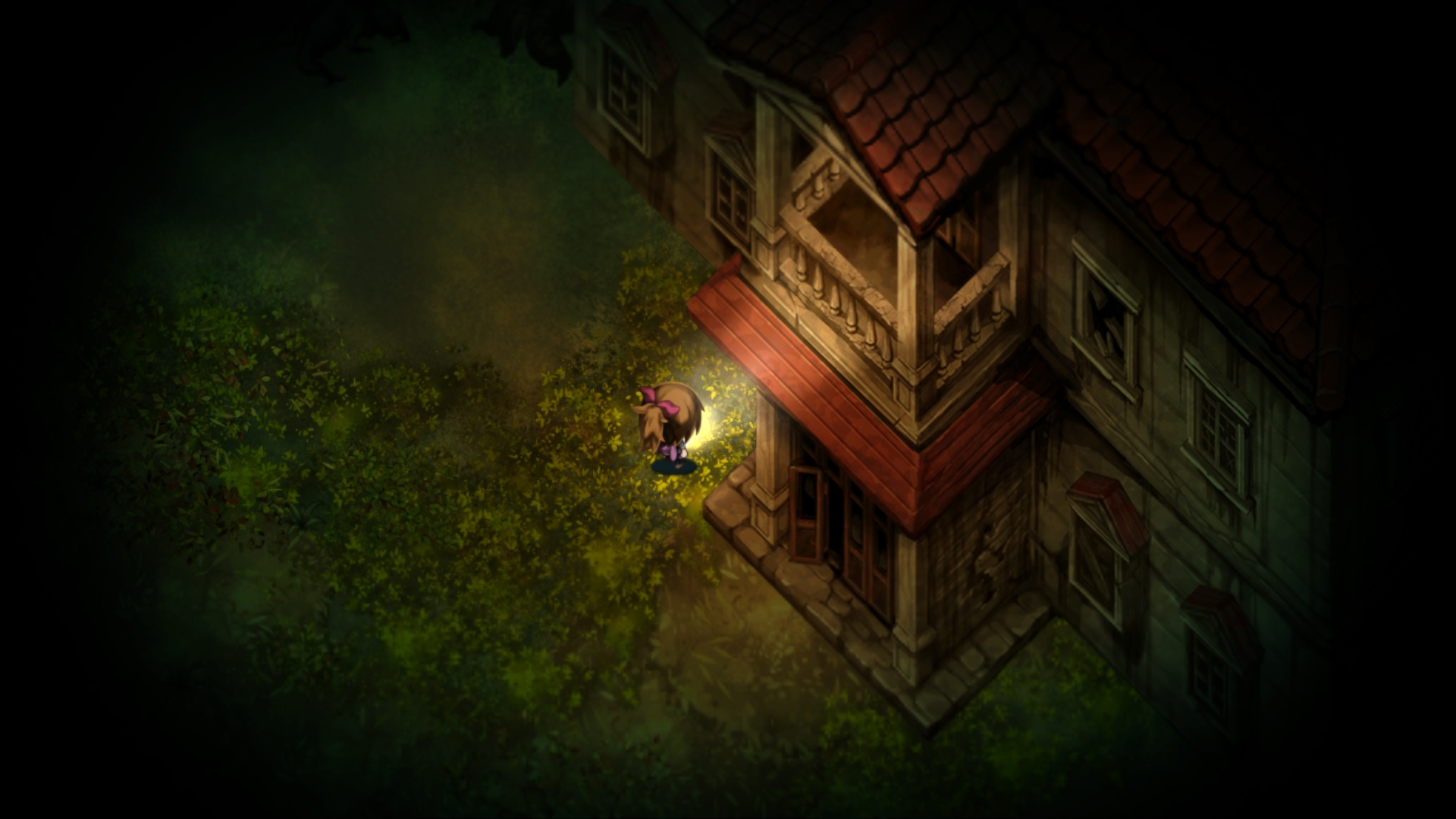
Friends Forever
In conclusion, regardless of my relatively minor criticisms, I think Yomawari: Midnight Shadows is a solid follow-up that deserves to be played and appreciated for how distinct, atmospheric and brutal it is. If you’ve played Night Alone and enjoyed it, then you’ll love Midnight Shadows, for it takes a small, but firm step forward into growing what its predecessor planted. Initially, it feels like more of the same, but it eventually gets a lot more interesting and scary in ways you didn’t think this game was capable of. It’s disturbing, thought provoking and emotional. It is also a hell of a lot of fun. I recommend you keep this game in mind for Halloween.











